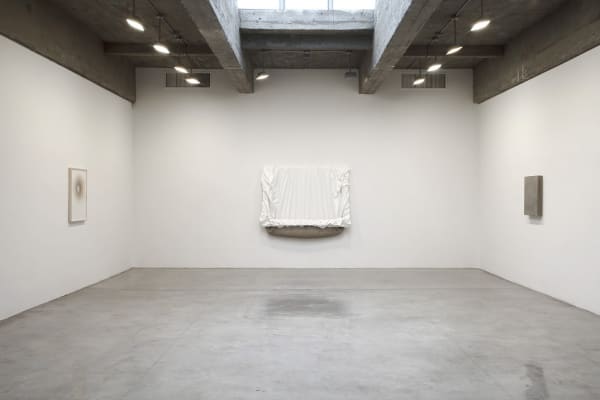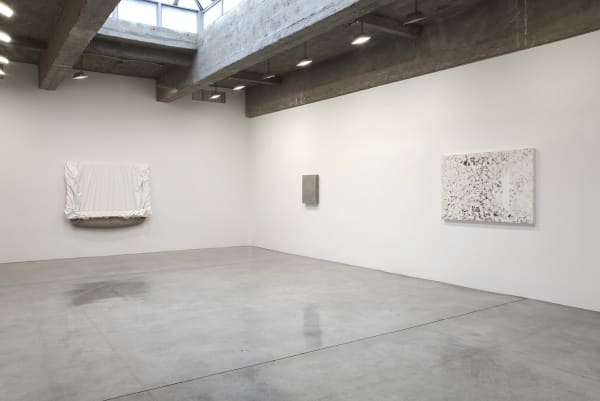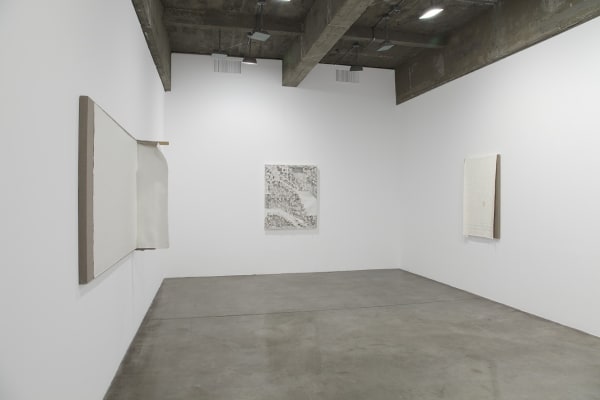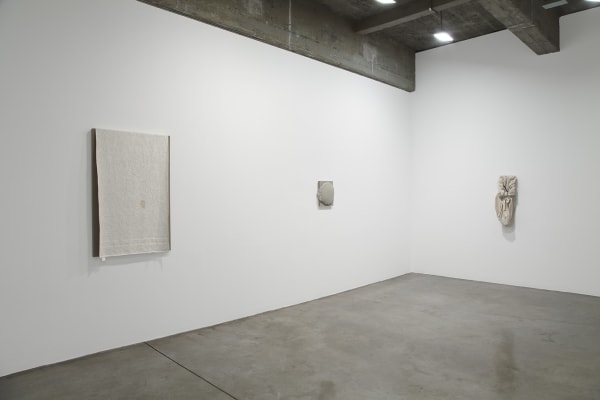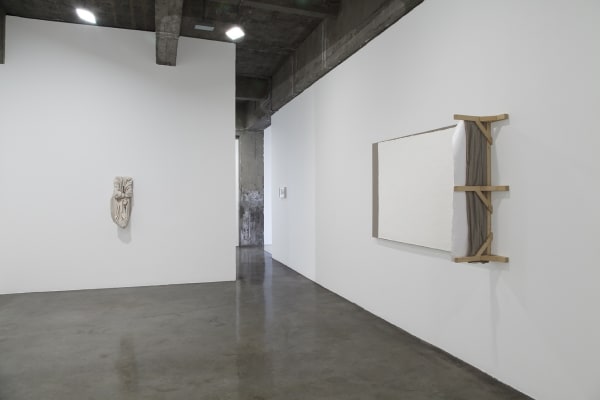Analia Saban: Gag: Tanya Bonakdar Gallery, New York
For the artist's first solo exhibition in New York, Analia Saban presents Gag, a series of new works that explore the artist's interest in exposing process and materials of art-making in relation to her daily experience. The contrast of materials, like the hard concrete versus wet oil paint, is a significant juxtaposition in this body of work.
The title of this show, Gag, is meant to be a double entendre. A gag is an object that is used to restrict airway, to block off, or fill negative space. It also means creative play. It is a very fitting term as Saban's works often include plays on art historical references and traditions. In Painting (with Brush), we see a large raw canvas with a few expressionistic marks of white paint. Off to the bottom of the canvas, Saban has attached a cast of a brush made of acrylic paint that was used to make these minimal strokes. The brush itself is not a traditional brush, but a toilet brush – an ironic and humorous nod to the purity of the minimal canvas. We see the representation of the brush again, in Brush Gag as well as in the laser cut drawing Still Life.
Though Saban's visual vocabulary is ever expanding, Saban finds inspiration from everyday objects such as bed sheets, towels, brushes, and even the architecture of her living and working environments. In Wall Corner (with Pinhole), Cast in Paint, Mounted on Canvas, we see a representation of a corner in her studio, made by the same casting process. If you look closely at the pure white surface, you see the imperfections of the wall that has been spackled and painted over many times, as well as a small pinhole, like a ghost of a photo or a drawing that used to hang there. The visual play of the negative versus positive image is an important theme in this new body of work. Combining the new technology of a laser cut machine with the classic and traditional practice of perspective drawing, the artist intentionally carves out and burns the canvas to create fragile drawings of negative space.
Trough (Flesh), a work that came out of the previous Decant series, is a very personal glimpse inside the artist's process. Almost identical to the artist's own weight and height, this new work, which hovers somewhere between painting and sculpture, contains over 110 pounds of oil paint that bulges and pools in the inside of the stretcher frame. The fleshiness and the weight of the wet paint (that will take years to become fully dry) is a reminder of the human quality to the piece and perhaps the clearest representation of Saban's theory that painting is, in its most simple form, a "container of paint."
All installation images above: Photo by Jean Vong
